Luxurious and powerful, the Marshall Woburn III stuns with premium looks and impactful sound at first. However, delve deeper and you’ll find that at ₹59,999, there are quite a few misses. There’s no aptX or LDAC codec support, which brings it down from the pedestal it could occupy in the premium speaker space. A great alternative is the AIWA RS-X150 Natsukasii Pro (review) which comes with AAC and LDAC support and is also cheaper! Additionally, the Marshall Woburn III lacks Wi-Fi or voice assistant support, which you get on speakers at half the price. What you won’t get is the carefully crafted blend of classy and retro aesthetics that Marshall has mastered over the years.
Marshall is a legendary audio brand widely known for its celebrated guitar amplifiers. The brand also has a wide portfolio of speakers and headphones, all renowned for their build and sound quality. So, naturally, when I got the opportunity to review the third iteration of Marshall’s flagship speakers, I was immediately excited. The Marshall Woburn III is one of the most pricey speakers you can find on the market at ₹59,999. For that dough, you get a beautiful build, powerful speakers, and an accompanying app. But is the new Marshall Woburn III worth its asking price or are there better options out there? Let’s find out in my detailed review of the Marshall Woburn III.
Marshall Woburn III Review: Build and DesignThe design of the Marshall Woburn III is reminiscent of Marshall’s old guitar amplifiers. It is a hunk of a speaker at nearly 7.5 kilograms and it measures 12.5 by 15.8 by 8.0 inches. The Woburn III is undeniably retro-looking and I think it looks very aesthetically pleasing – so much so, that it would make for a fine showpiece in your living room. However, with these dimensions, the speaker wouldn’t comfortably fit under any TV, which is a shame since it has HDMI connectivity.
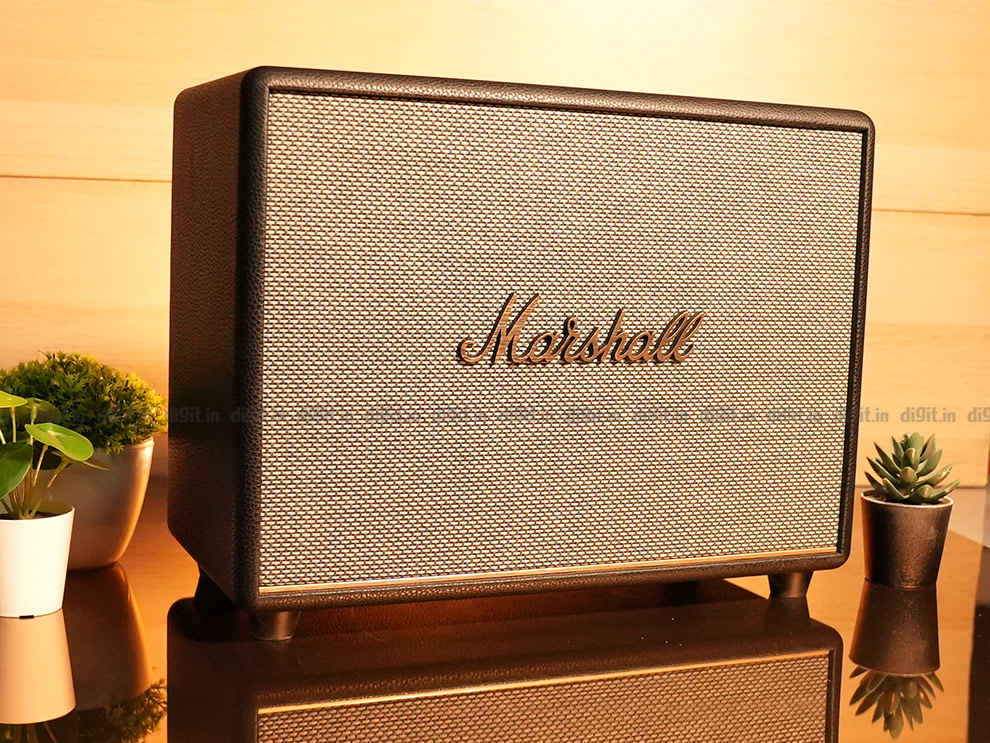
The build quality is excellent though; one of the best in the business. The faux leather material and brass control knobs look ridiculously premium. Up front, the cloth speaker grille with the cursive ‘Marshall’ branding set it apart visually. The overall design language screams retro and premium. You can also choose between two colourways – Black and Cream – both of which look equally stunning.
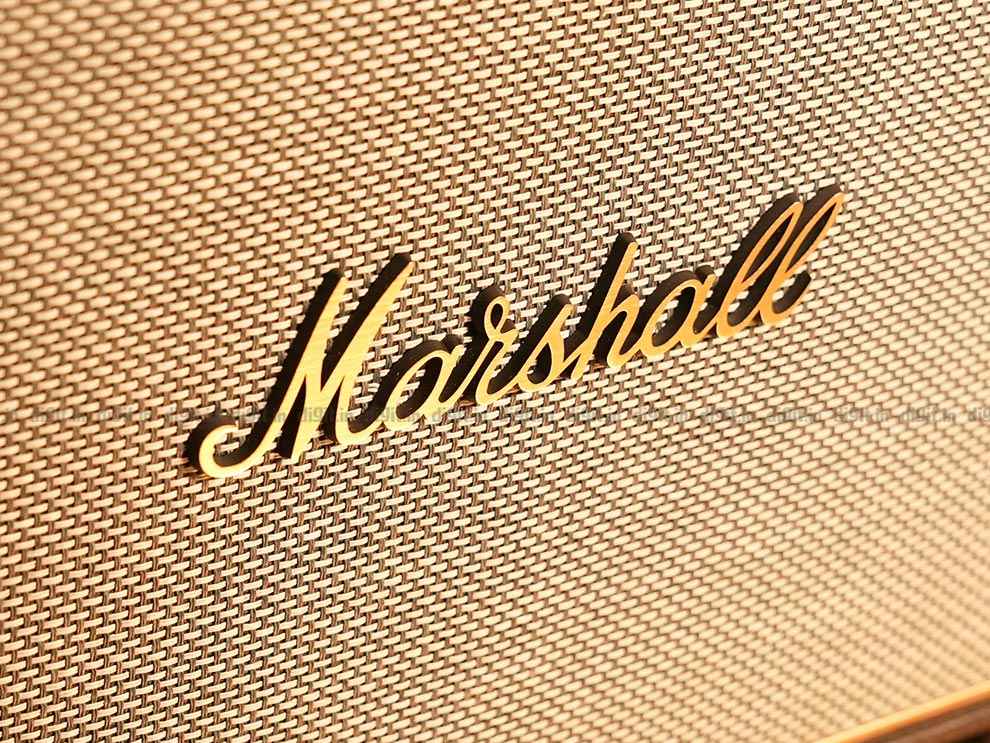
The knobs include volume controls, bass and treble adjusters. There’s also a play/pause button, a track skip forward/backward slider knob, and a source button (Bluetooth, AUX, RCA, or HDMI). And lastly, you’ve got the power switch that is quite literally reminiscent of ‘switches’ of the yesteryears.
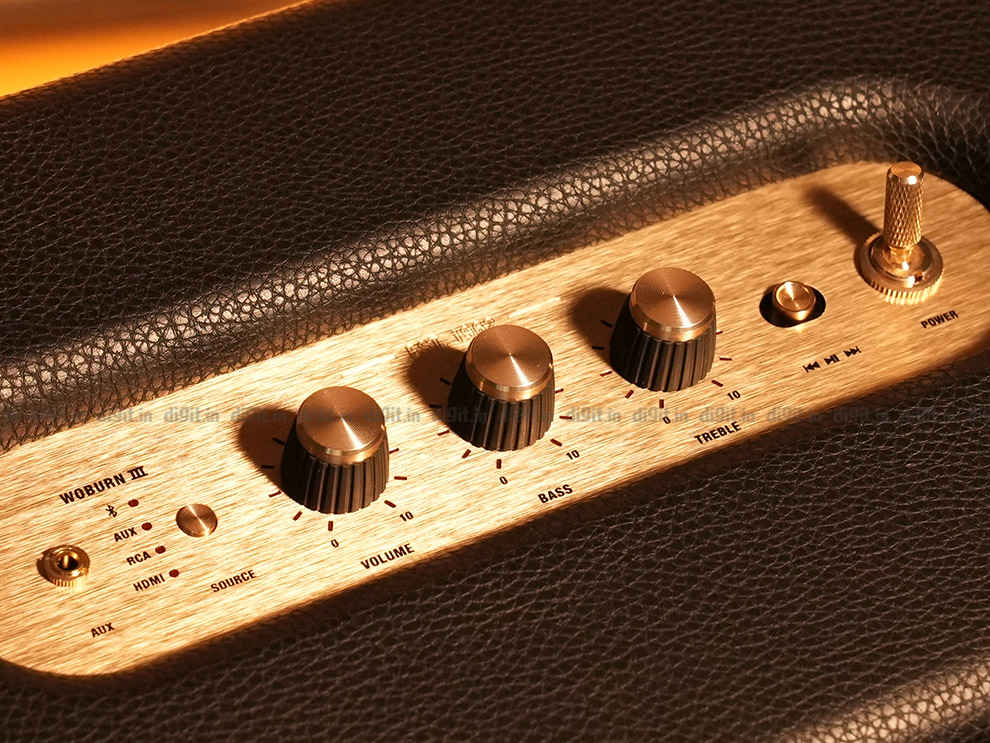
One thing missing on the speaker is a carrying strap, but the company has included a cavity in the back panel which you can slip your hand into. It helps make it a bit easier to carry the speaker, but a carrying strap would have taken that a step further. However, it is not really aimed to be a portable speaker, since it does require constant power to operate. As for connectivity options, the speaker has Bluetooth v5.2, HDMI, RCA, and a 3.5 mm jack.
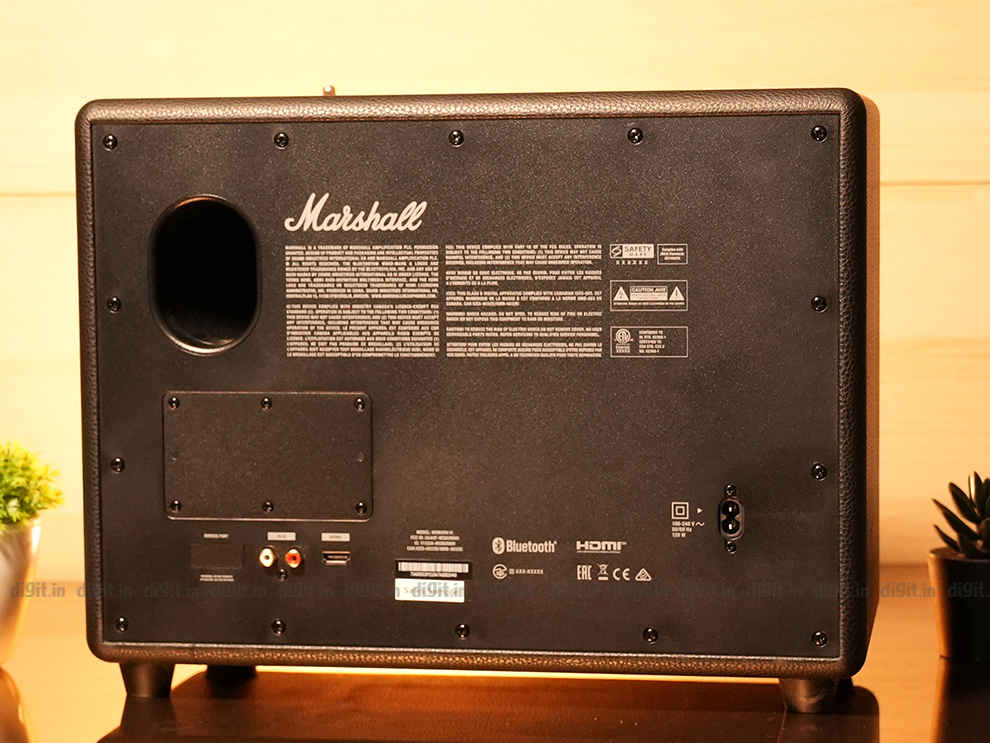
Marshall has attempted to use sustainable materials in the construction of the Woburn III. It has a PVC-free build which comprises of 70 per cent recycled plastic and vegan leather materials. So, props to the company for that.
Marshall Woburn III Review: FeaturesLuxury speakers – while usually premium-looking – miss out on some features that are found on other consumer brands’ offerings. Here, we miss out on Wi-Fi connectivity and voice assistant support. I did miss Wi-Fi support as speakers from Sonos and other such companies usually pack full Wi-Fi connectivity and features. There’s no official IP rating as well, so be wary of using the speaker around water or dust.
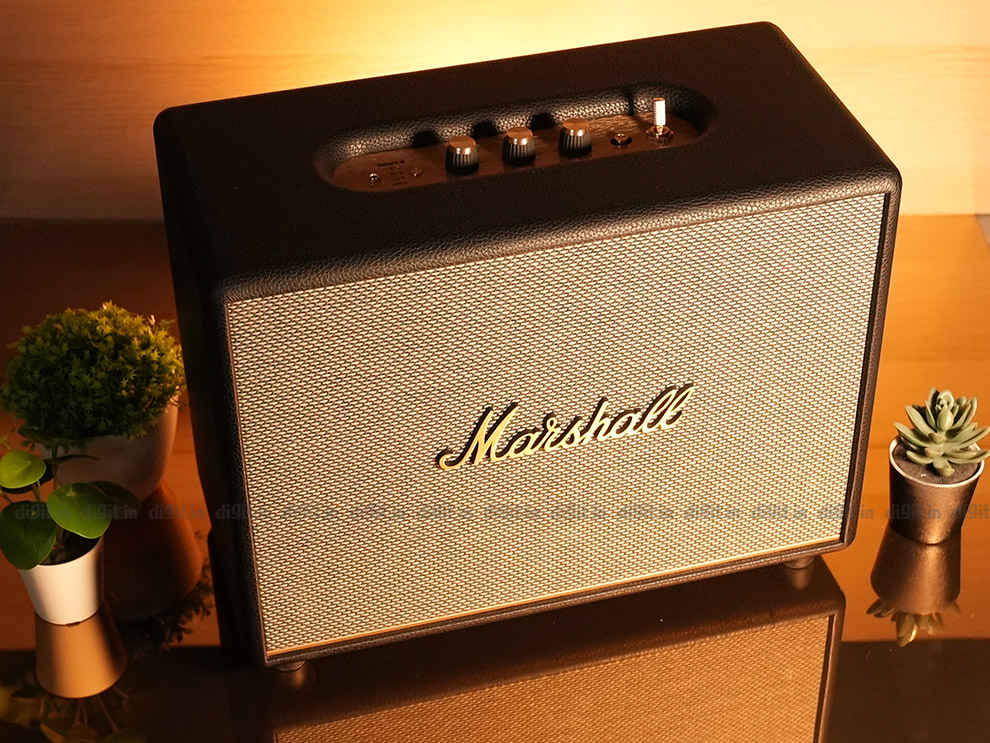
There’s an accompanying app that allows for some basic customisation. There’s an in-app EQ but it is not visual and only allows you to control the bass and treble frequencies – which you can also control via the physical controls, so there are no additional benefits in the EQ department on the app.
There’s a Placement Compensation feature within the app that asks you two basic questions to ascertain the position of the speaker in your room and adjust the sound accordingly, to eventually provide a more room-filling sound. Marshall has also added Night Mode which lowers louder sounds but ensures that quiet sounds are still clear and audible. I didn’t find a tangible difference when connected to Bluetooth, but the feature seems to be aimed at HDMI usage, so it could be more effective with HDMI connection.
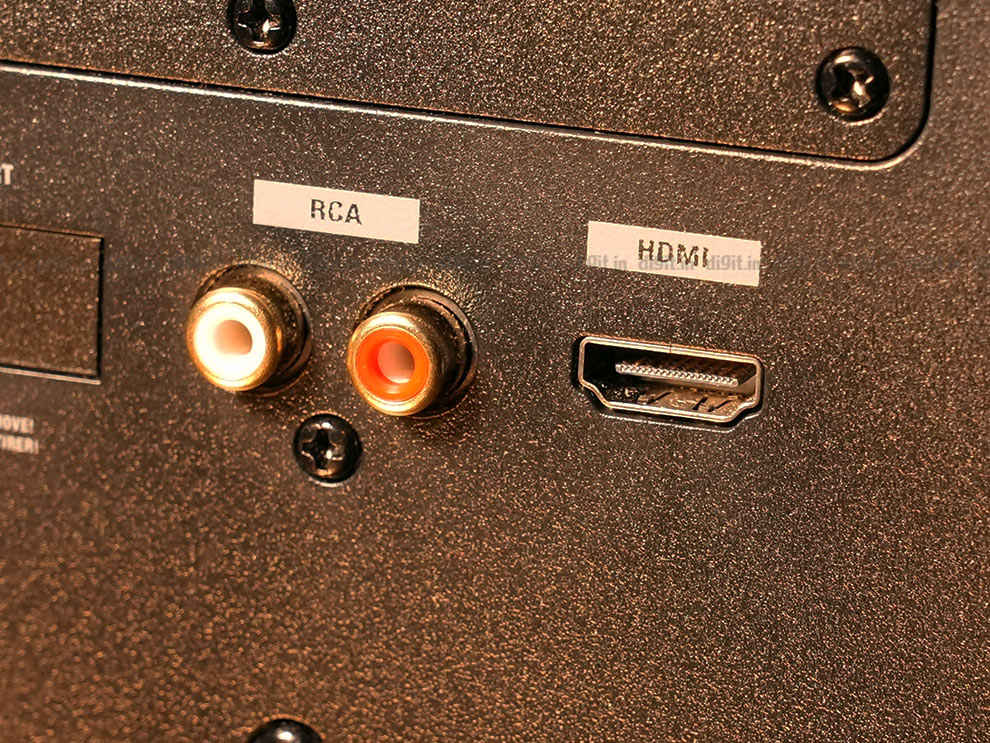
That aside, you get basic playback controls, the ability to update the firmware, and… that’s about it. It is a pretty barebones app in terms of features. The same is true for the speaker as well; you’ve got a couple of features that work decently well, but that’s about it.
Marshall Woburn III Review: PerformanceBehind the speaker grille of the Marshall Woburn III, you’ve got a 90 W Class D amplifier that powers a 6-inch woofer, dual 15 W amplifiers for the two 2-inch mid-range speakers, and dual 15W Class D amplifiers that drive the two 0.75-inch tweeters. The speaker supports a frequency range of 35 Hz - 20,000 Hz and is only compatible with the SBC codec. Here lies the gravest shortcoming of Marshall Woburn III. It is hard to give Marshall a pass for the fact that the speaker doesn’t come with aptX or LDAC codecs since it is priced at a whopping ₹59,999.
The drivers on the Marshal Woburn III pack a punch and are very capable, however, the lack of LDAC or aptX means that you can’t play hi-fidelity FLAC music to its full potential over Bluetooth. If you connect using a wired source, high-fidelity playback is possible, of course.
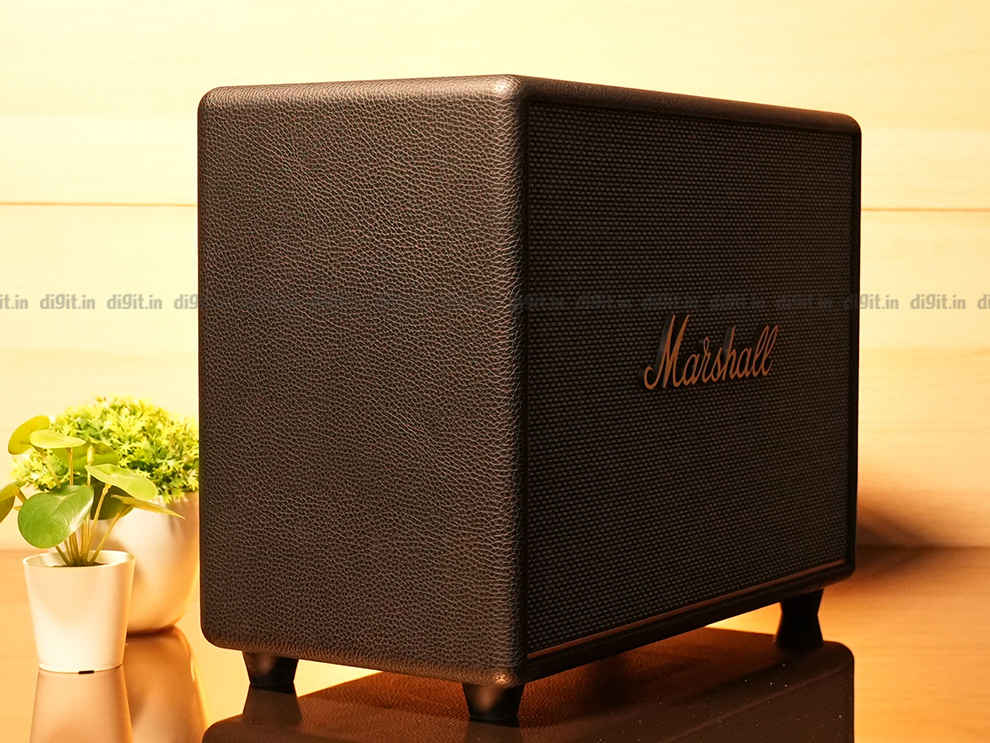
The speaker has a V-shaped sound signature with boosted lows and highs, however, they don’t impact the clarity of the mids given the fantastic tuning of the drivers. The low-end has a nice punch to it, and instruments such as kick drums are driven with ease even at low volume levels. In Another One Bites the Dust by Queen, the low-end rumble sounds detailed and has a lot of presence without being overbearing.
I did notice that there is some discernible distortion at high volume levels though. The speaker gets extremely loud though, so you won’t usually need to push it to maximum volume levels. In fact, it can encompass a large space with room-filling sound at 60-70 per cent volume. At these volume levels, the lows sound clean, the bass has great rumble, and the mids are detailed with sparkly highs to complement. It is not a flat sound profile, but it has character and is very enjoyable. LDAC or aptX codec support would definitely be a cherry on top, but alas, it is missing.
Marshall Woburn III Review: VerdictLuxurious and powerful, the Marshall Woburn III stuns with premium looks and impactful sound at first. However, delve deeper and you’ll find that at ₹59,999, there are quite a few misses. There’s no aptX or LDAC codec support, which brings it down from the pedestal it could occupy in the premium speaker space. A great alternative is the AIWA RS-X150 Natsukasii Pro (review) which comes with AAC and LDAC support and is also cheaper!
Additionally, the Marshall Woburn III lacks Wi-Fi or voice assistant support, which you get on speakers at half the price. What you won’t get is the carefully crafted blend of classy and retro aesthetics that Marshall has mastered over the years. If looks are the most important to you, the Marshall Woburn III is one of the most artfully-designed speakers you can buy in 2023. For everything else, we have seen better.
from Audio Video Reviews https://ift.tt/XCe0jIU
Comments
Post a Comment